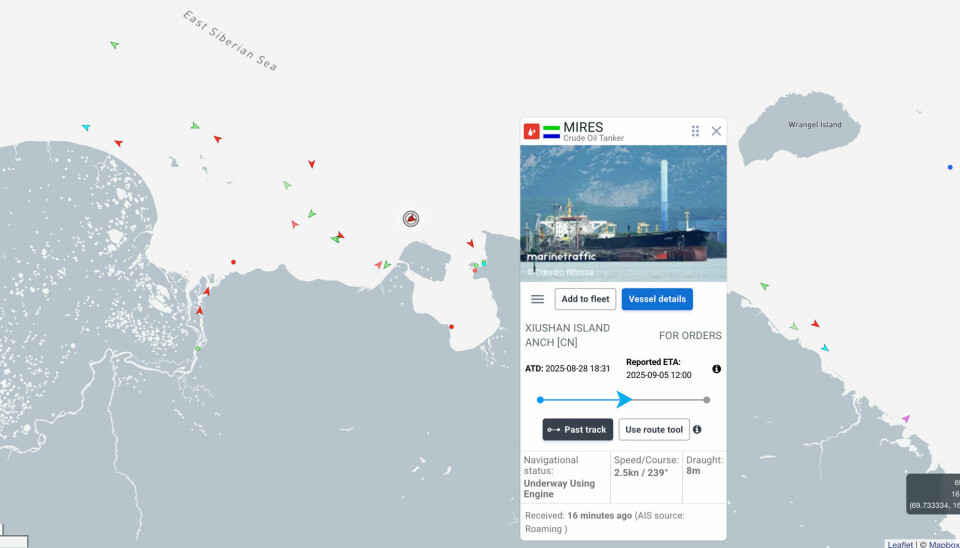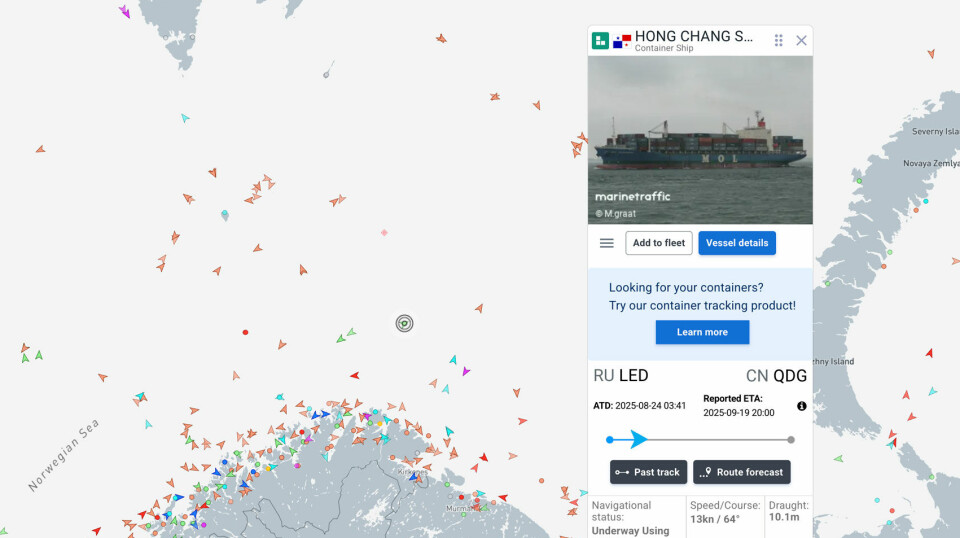
A 20-year-old 'shadow fleet' oil tanker without ice-class is entering icy Arctic route
The Mires is 244 meter long and sails under the flag of Sierra Leone. “Ships of this kind are in danger of serious damage if they get in contact with sea ice,” says a professor in ice navigation.
“Unfortunately, there appears to be an increasing number of ships without ice-class sailing on the Northern Sea Route (NSR),” says Professor in ice navigation Norvald Kjerstad.
“Ships of this kind are very exposed to serious damage if they get in contact with ice - especially ice that contains parts of glacier ice or multi-year-old ice, which is the case along the whole NSR,” he explains.
Kjerstad spoke to the Barents Observer as the Mires, a 244-meter long oil tanker without ice-class entered the eastern part of the sea route. The tanker is on the sanctions lists of Ukraine and the UK.
The Mires set out from the Chinese port of Xiushan Island on August 28 and sailed through the Bering Strait and into the Chukchi Sea on August 9.

There are substantial volumes of sea ice in the area. The ship will have to sail through an area of almost 500 nautical miles covered by drift ice.
“These are normally unacceptable conditions for a ship without ice-class,” Kjerstad emphasizes to the Barents Observer.
The destination of the 106,094-ton deadweight tanker is not clear, but it is likely to eventually make a port call in Murmansk where it will pick up oil and proceed to an export market.
The 20-years-old tanker is sailing on the icy route with the blessing of the authorities in Moscow.
The permission issued by the Russian Northern Sea Route Administration reads that the ship is allowed to sail across the whole route without icebreaker escort in areas without sea ice.
Ship tracking information indicated that the tanker was sailing without icebreaker escort near the coast of the Chukotka peninsula on September 11.
Apparently, the Mires is the only zero ice-class oil tanker with permission for transit sailing on the NSR this year. But there are several other kinds of vessels without ice-class approved for sailing in the area.
The Barents Observer has compiled a list of more than 20 non-ice-class bulk carriers, cargo ships and container carriers that have gotten Moscow’s approval for sailing on the route.

Several of them were sailing in the far northern waters in the first week of September. Among them are the container carriers Hong Chang Sheng and Honwell. The carriers are 26 and 24-years old respectively and both sail between China and St.Petersburg.
According to Ksenia Vakhrusheva, Arctic project advisor at the environmental organization Bellona, there is a high risk for environmental damage, especially of oil spill, from shipping along the NSR.

She explains that so-called 'shadow fleet' ships are allowed to sail on the route. Many of them sail with their AIS turned off and many are not listed in the official NSR registry.
She argues that Russian authorities are neglecting security.
“The attitude of the authorities towards environmental risks is negligible. It is more likely that we will know about an oil spill from international journalists who monitor satellite images, than from Russian authorities,” she says to the Barents Observer.
Vakhrusheva emphasizes that vessels without ice-class in principle can sail along the NRS only when there is no ice or with an icebreaker escort when there are light ice conditions. But the conditions in the far northern waters can change rapidly.
“The question is what happens when ice conditions change. Last year, Chinese ships violated this rule and continued shipping with harder ice conditions than was permitted. We saw that Russia allowed this and no known sanctions were in place on these ships. It can happen again,” she says.
The Arctic expert does not exclude that Russia uses the Arctic route for transportation of sanctioned goods.
“Russia uses all possible routes to deliver sanctioned goods, including the NSR. Delivery of equipment for the Arctic LNG 2 project was an example of this. It is possible that vessels carrying goods from China to Russian ports carry also dual-purpose or sanctioned goods, but it is difficult to investigate.”
The Mires is sanctioned by the UK and Ukraine. According to Ukrainian authorities, the ship’s owner and commercial manager indicate that the tanker is part of the so-called ‘shadow fleet’ that transports Russian oil in circumvention of international sanctions.














